Attempting Exhaustion
Daniel Blaufuks & Katherine Sirois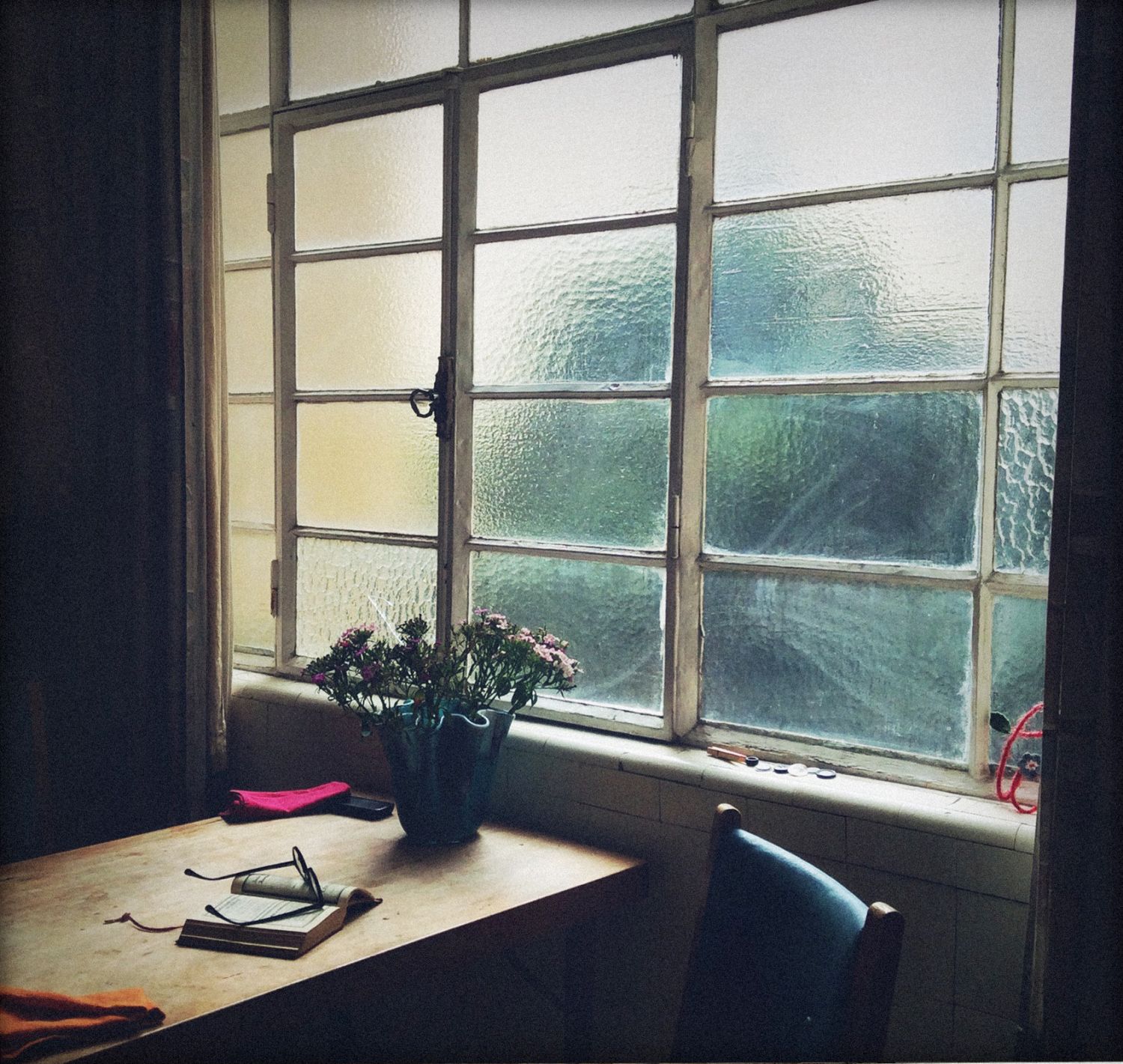
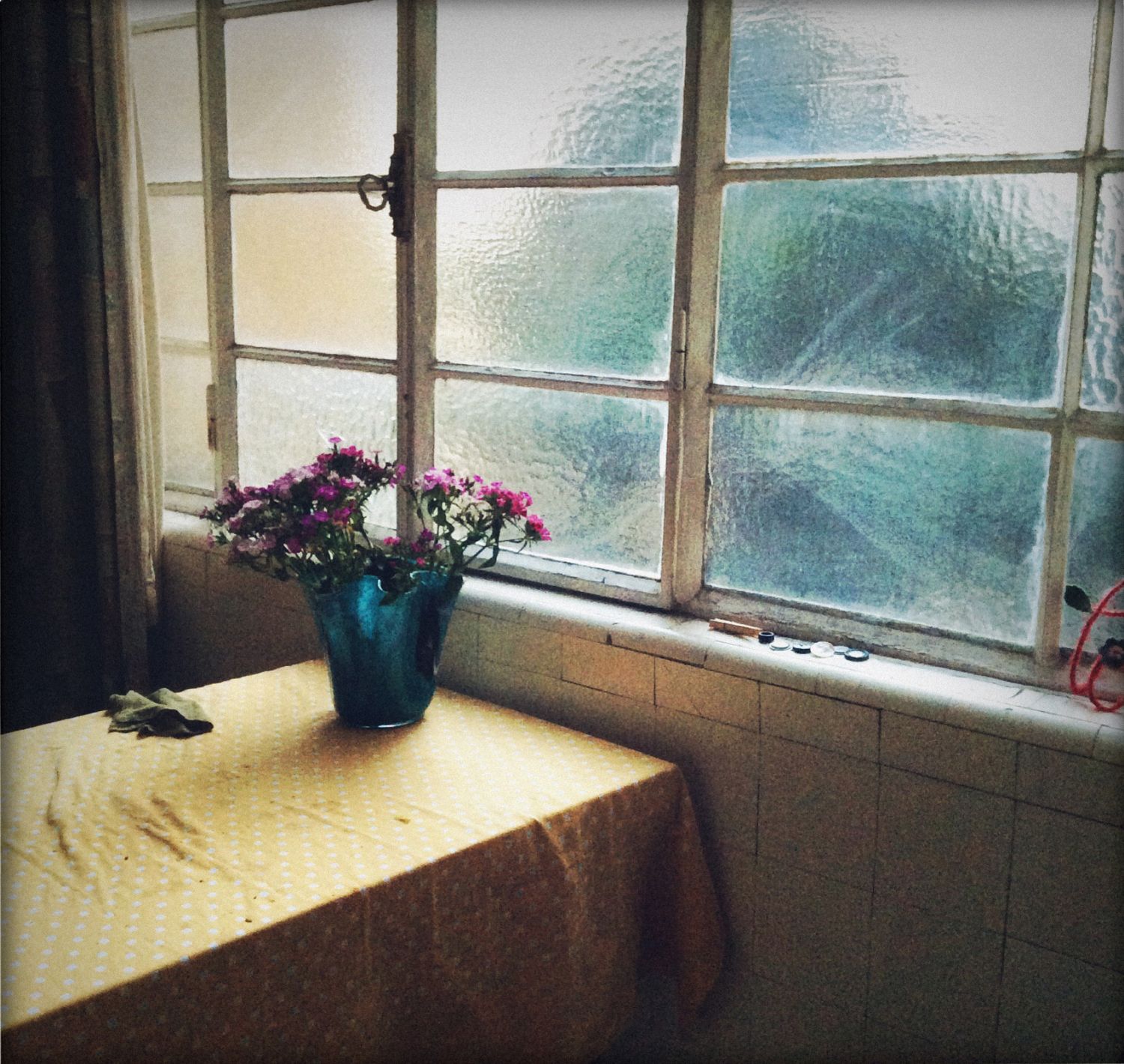
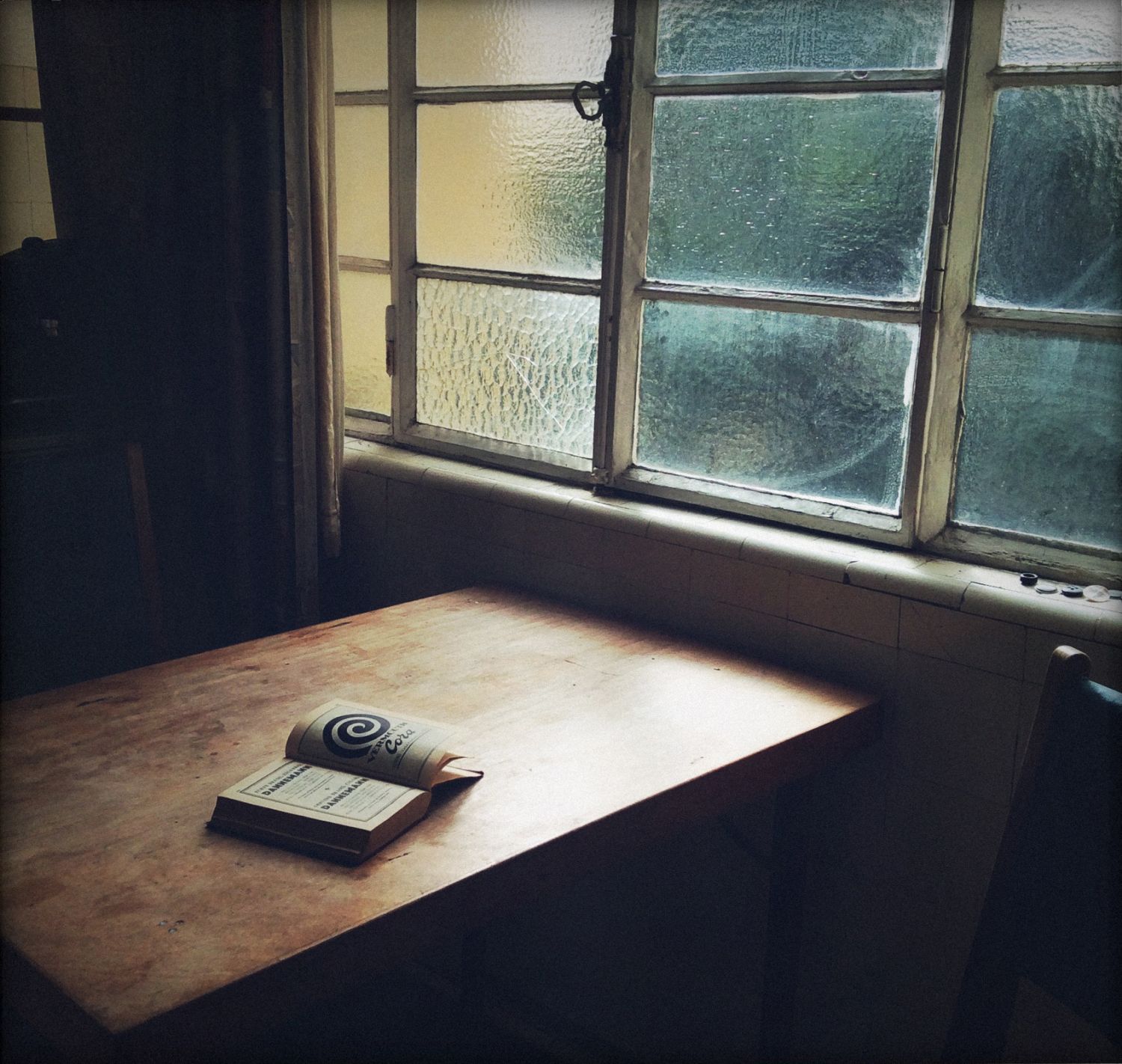
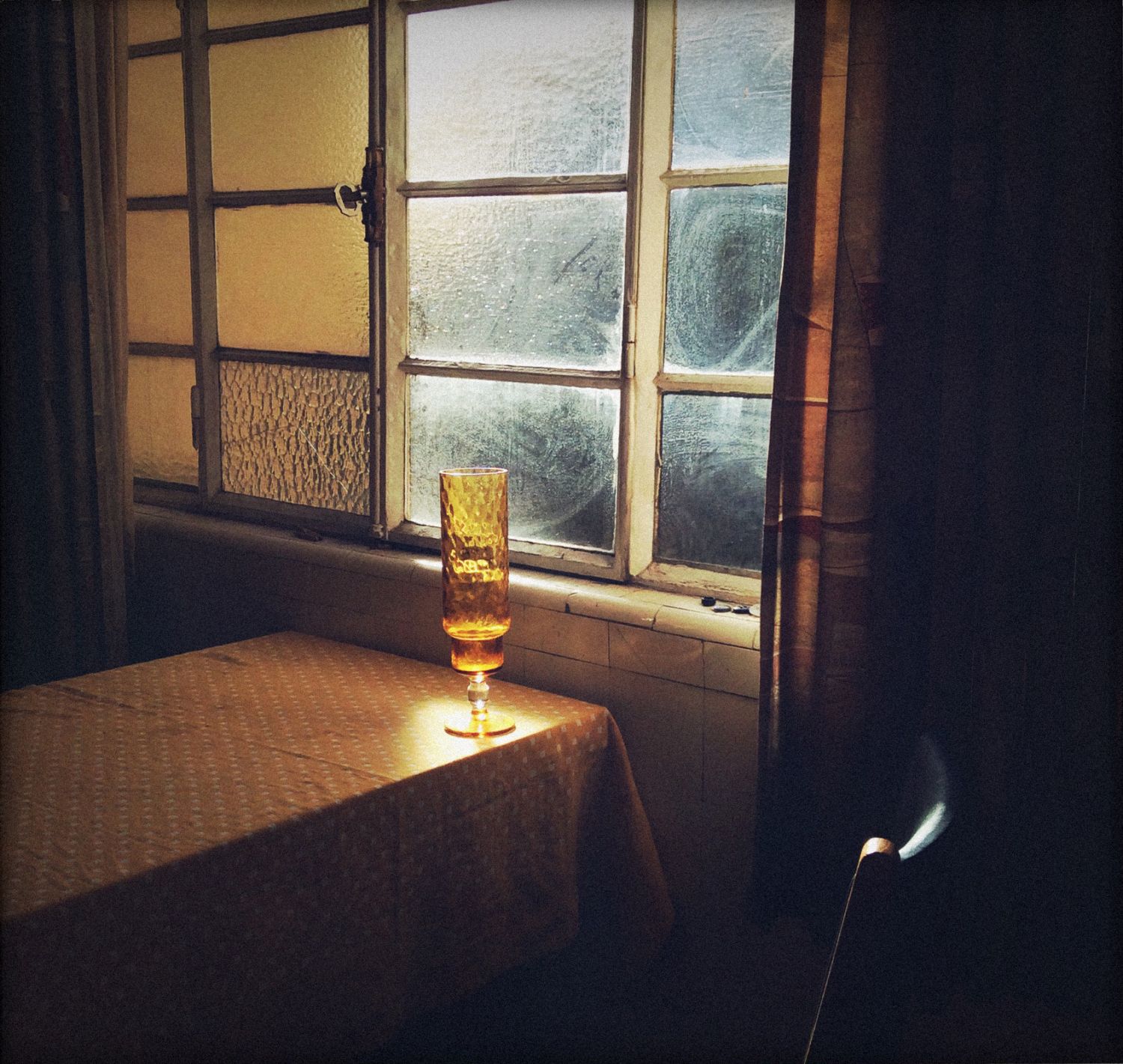
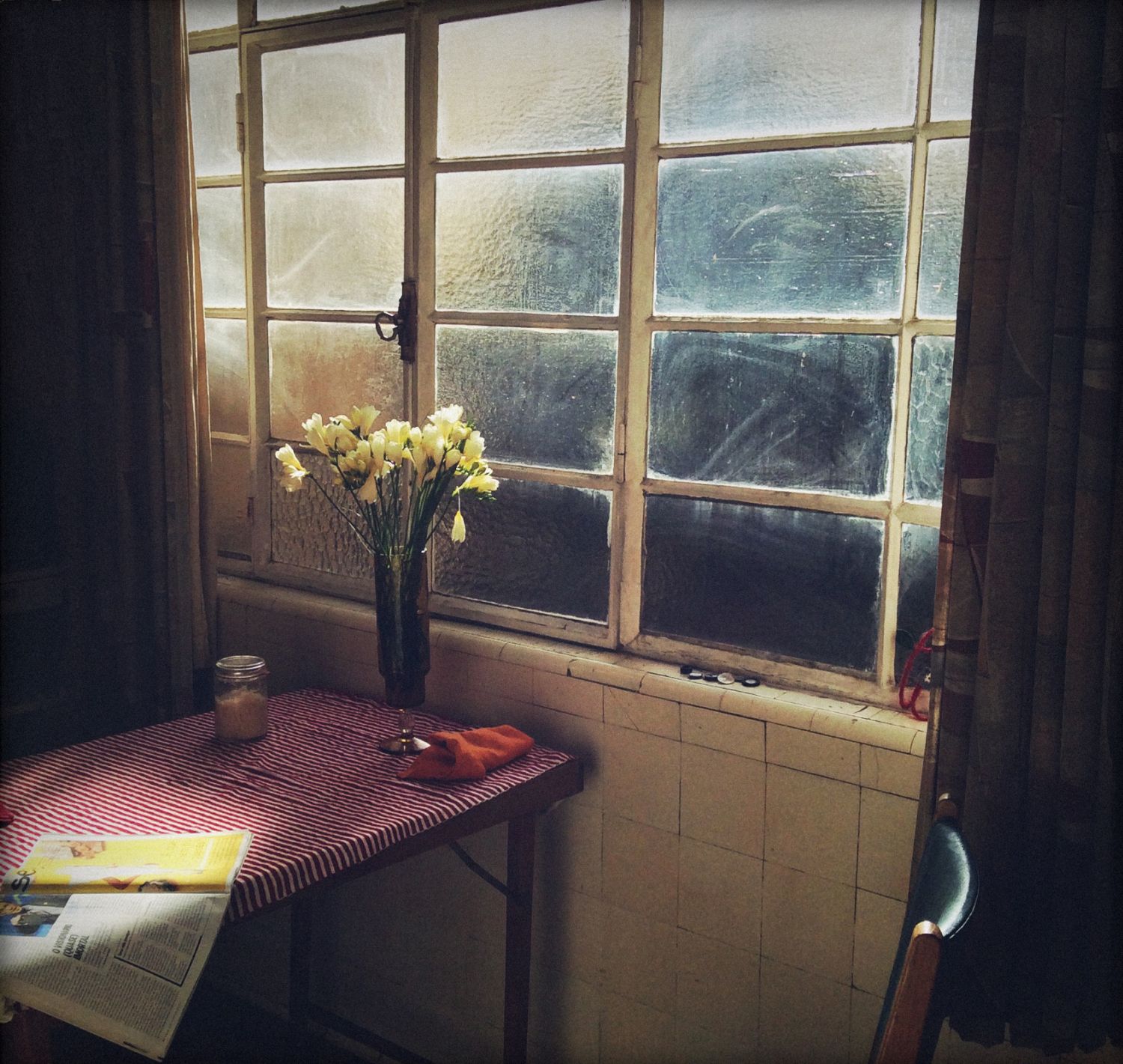
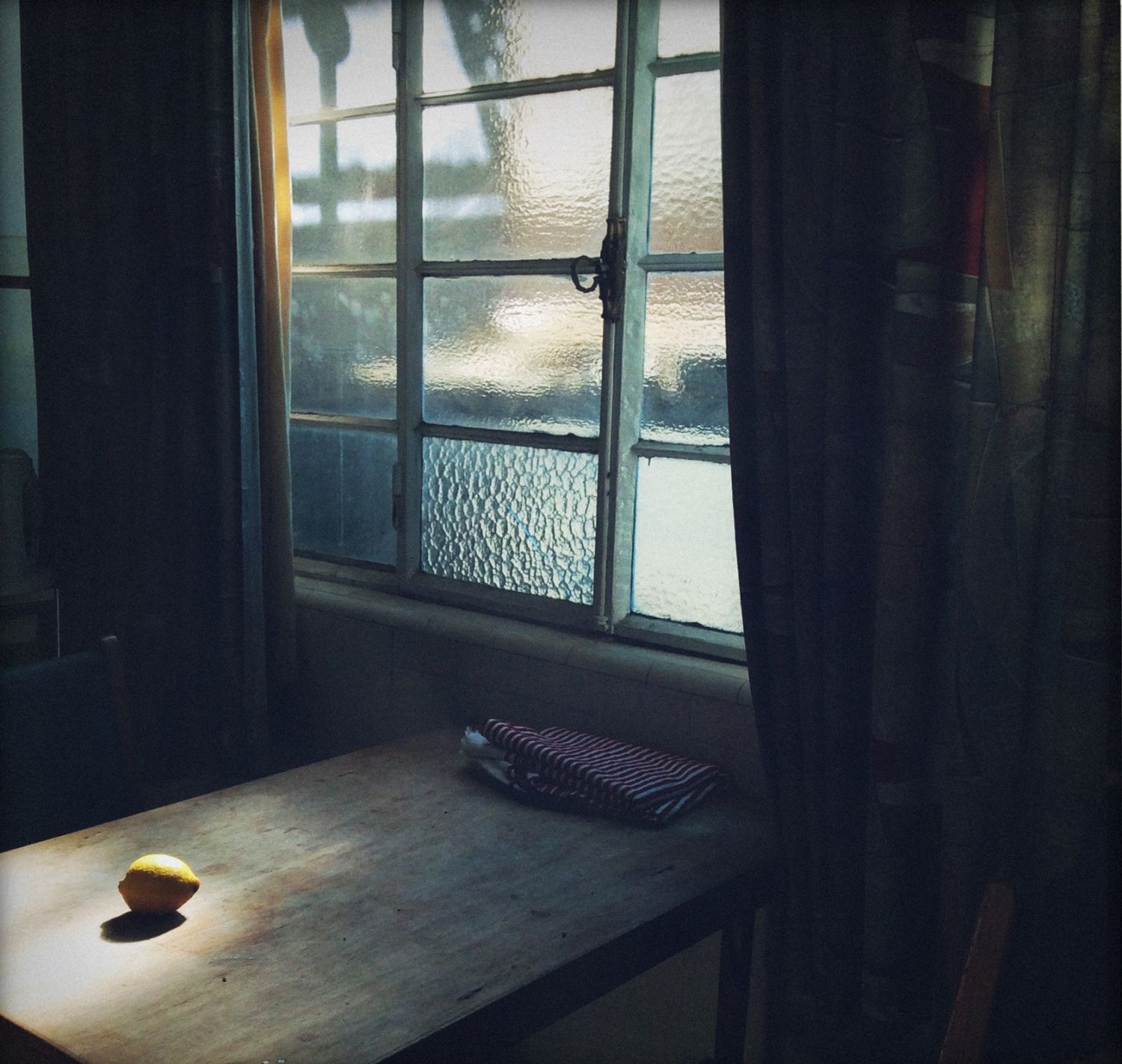
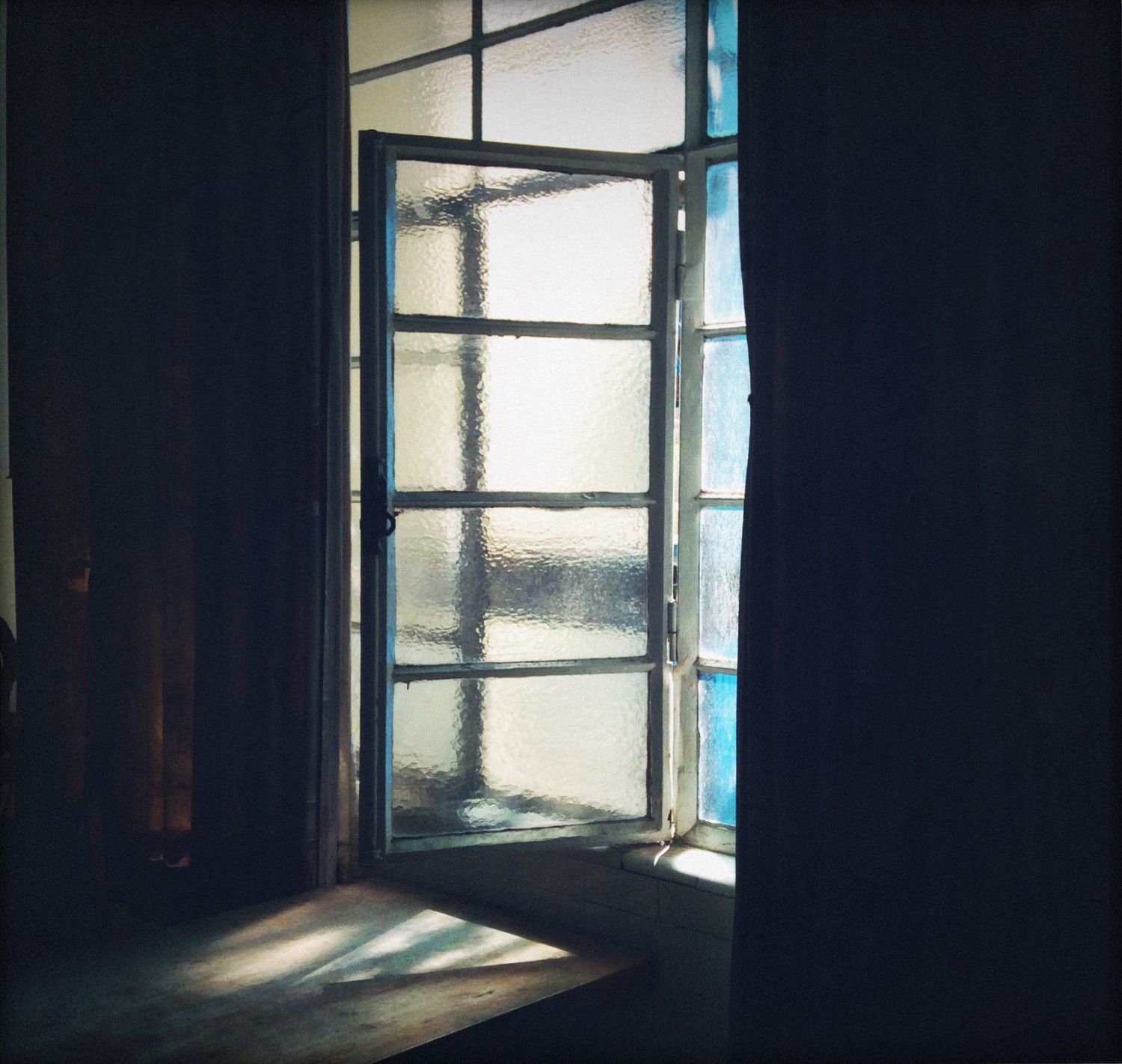
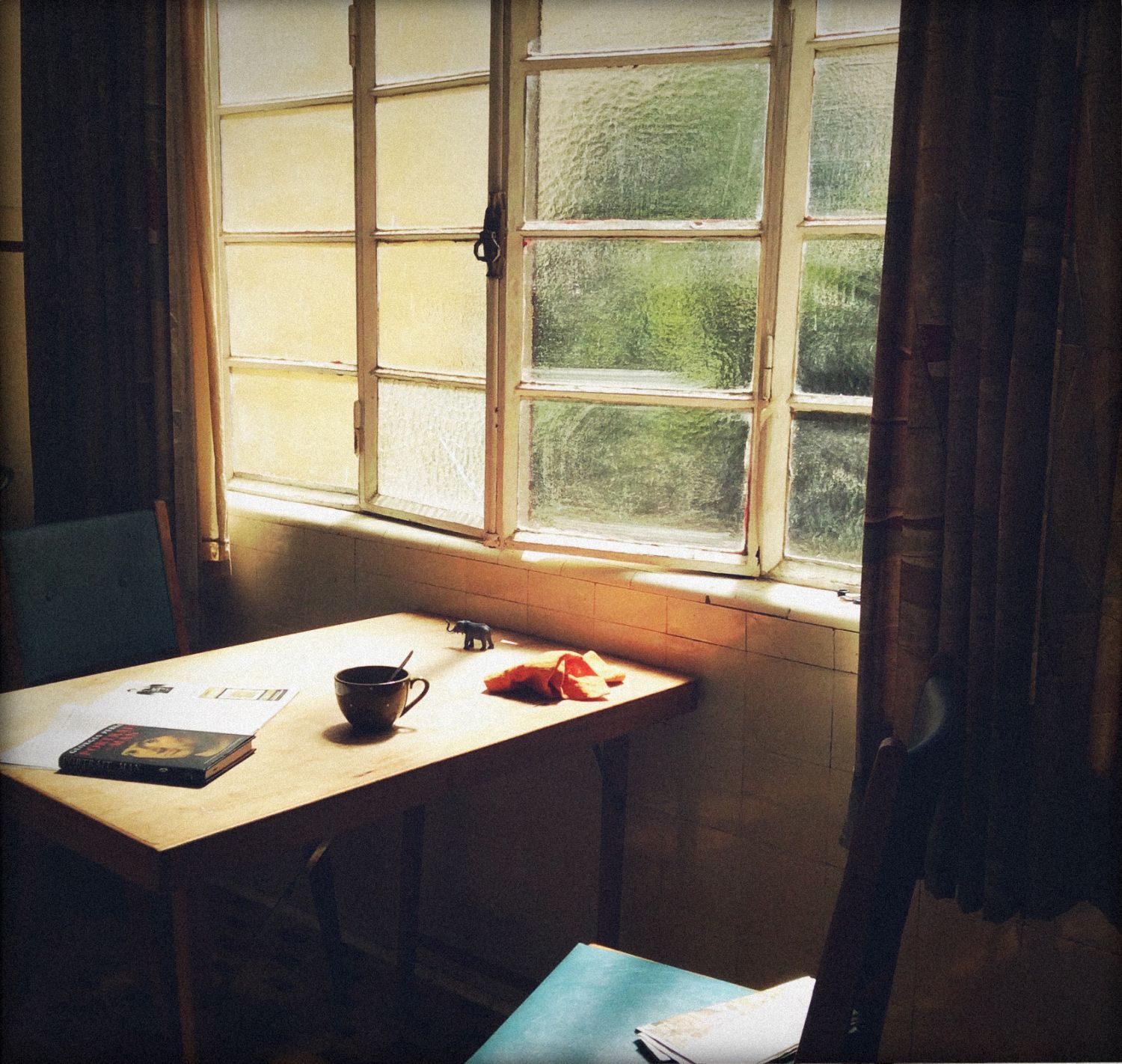
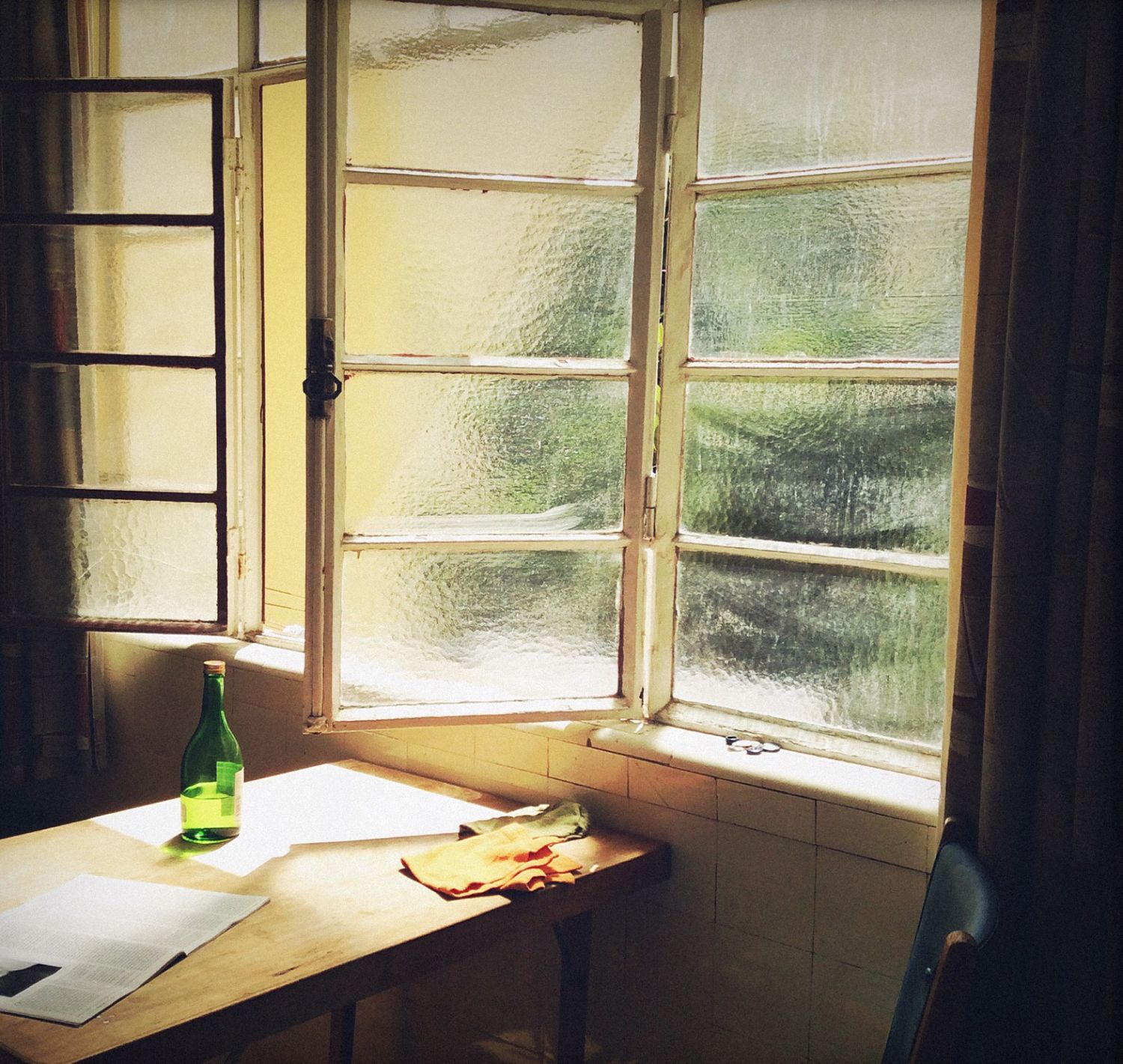
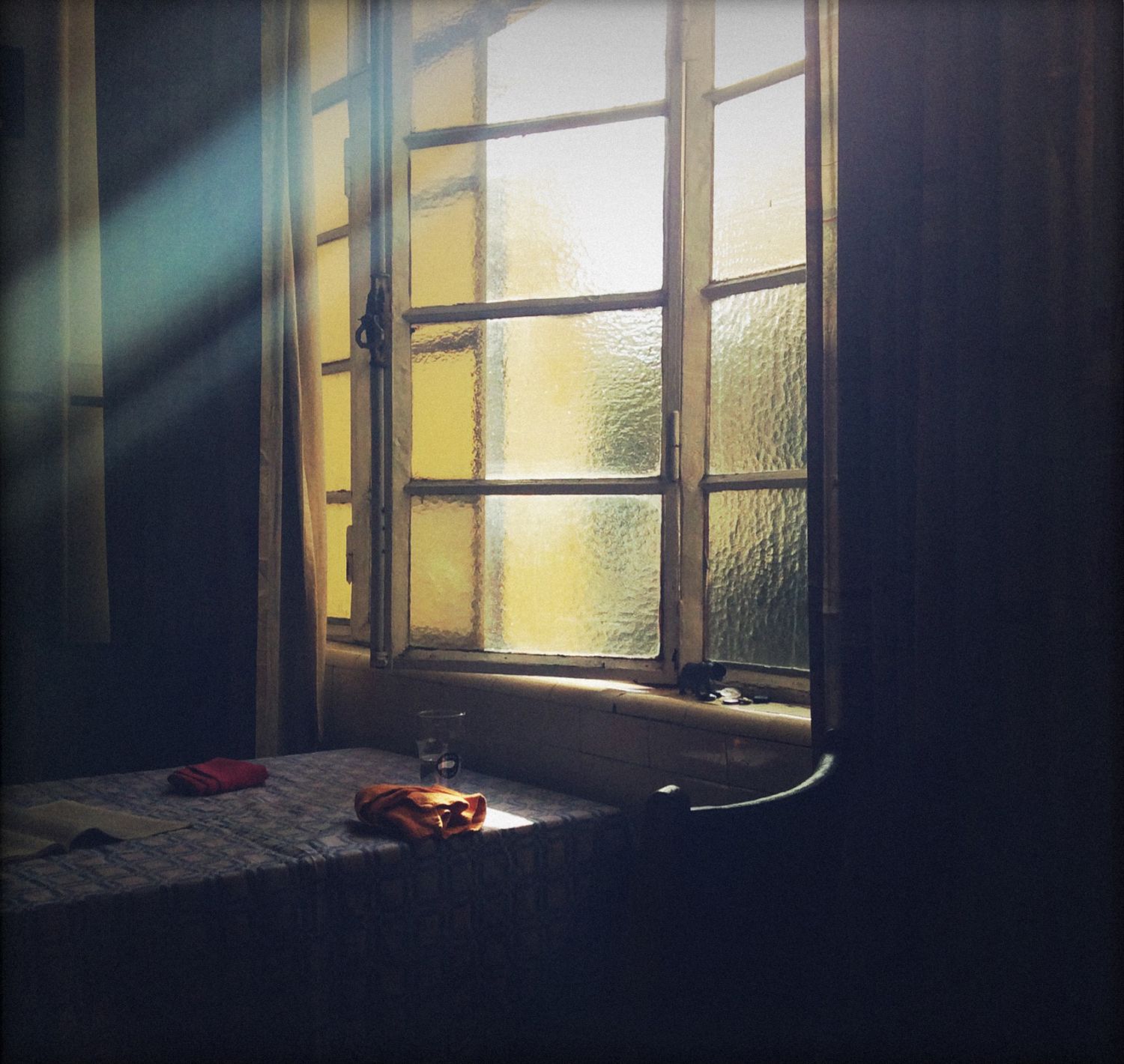
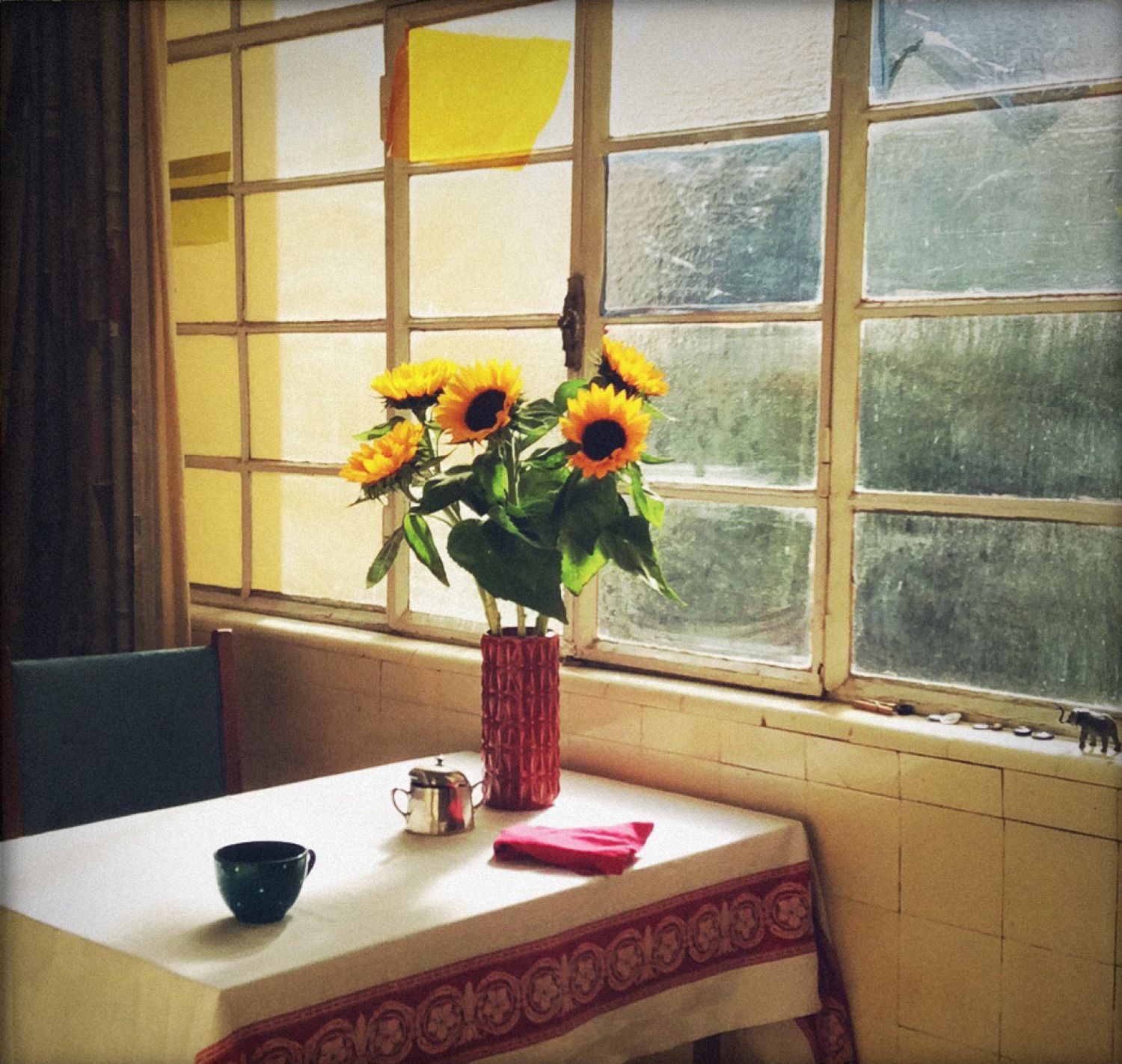
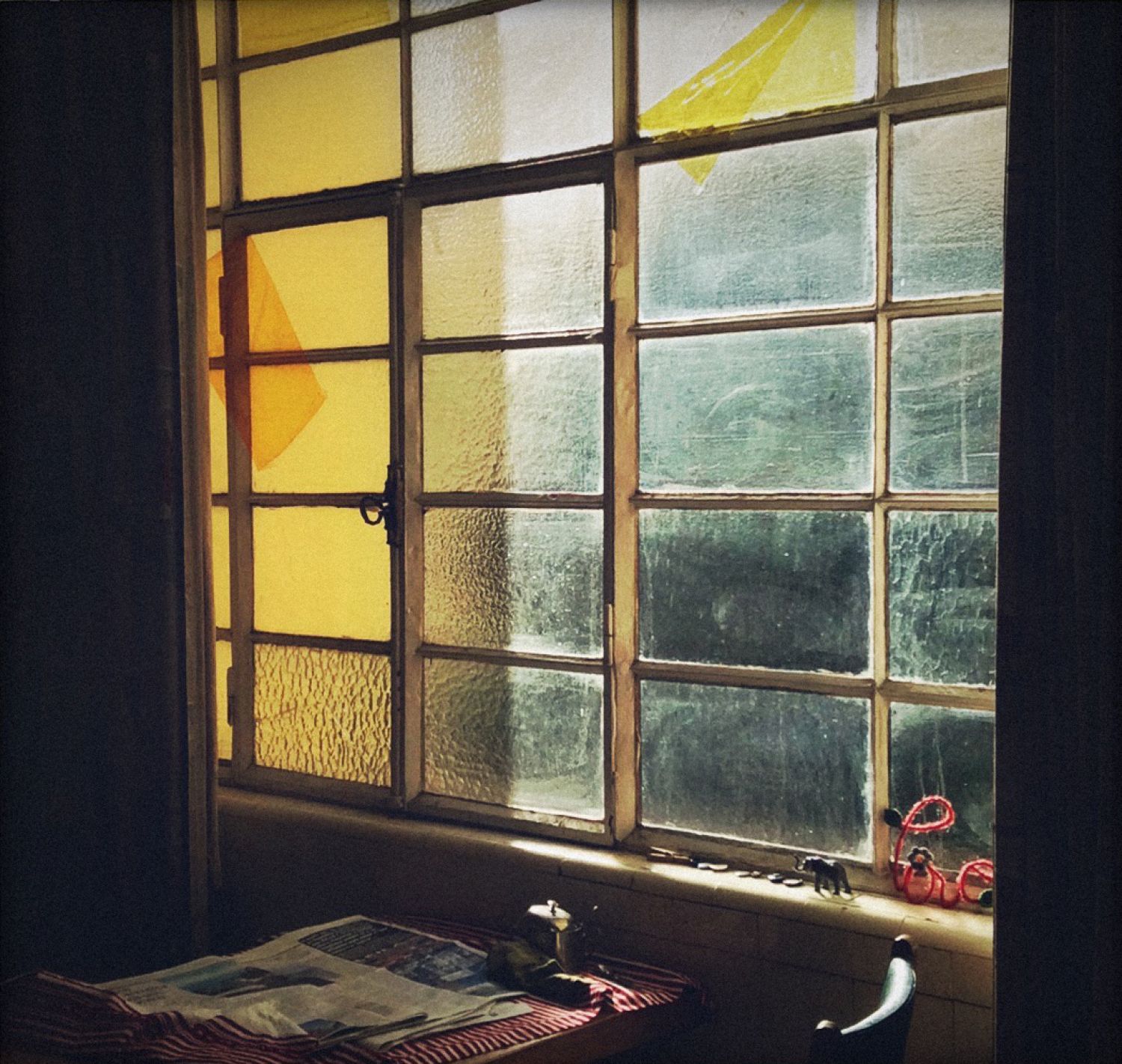
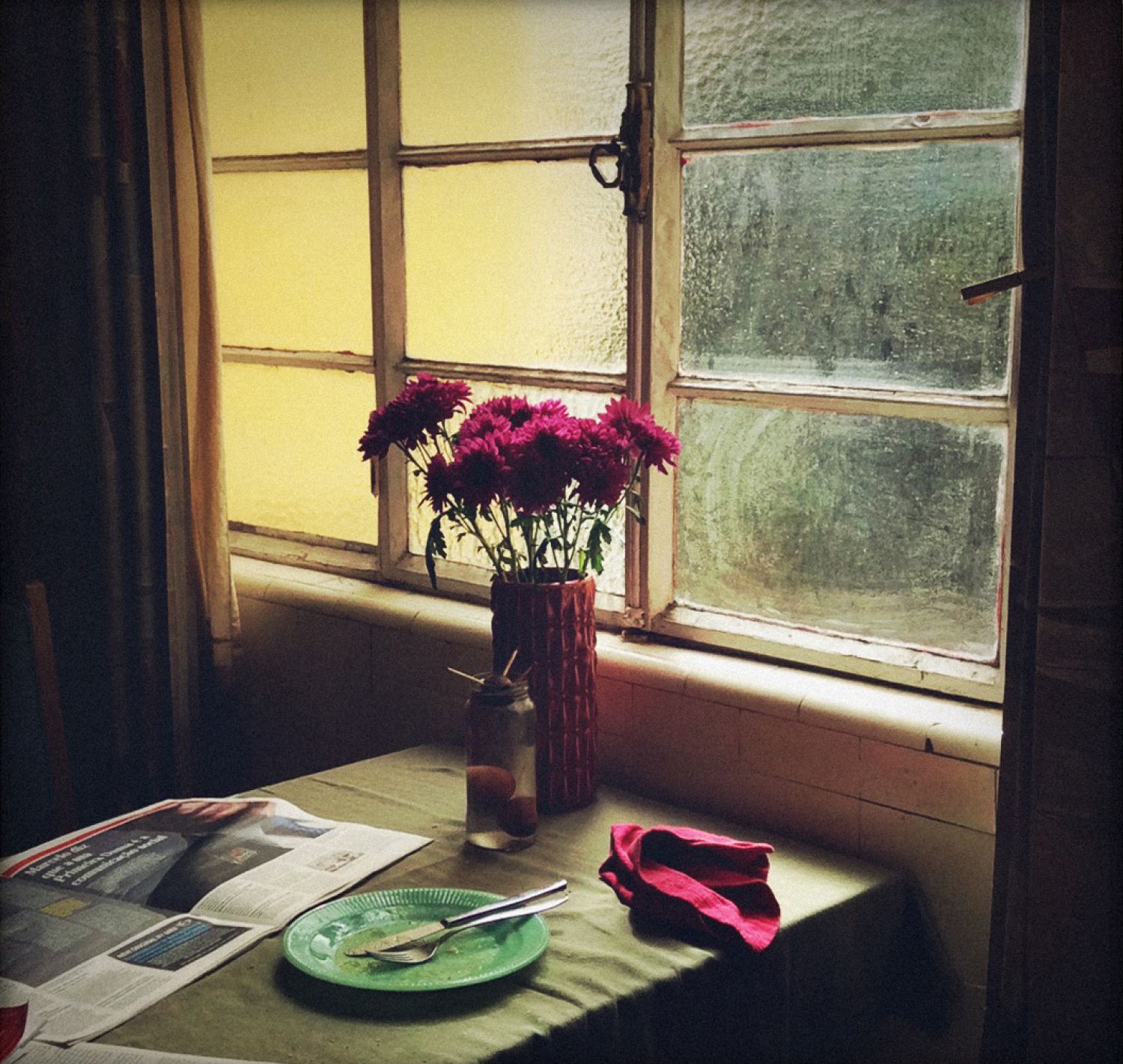
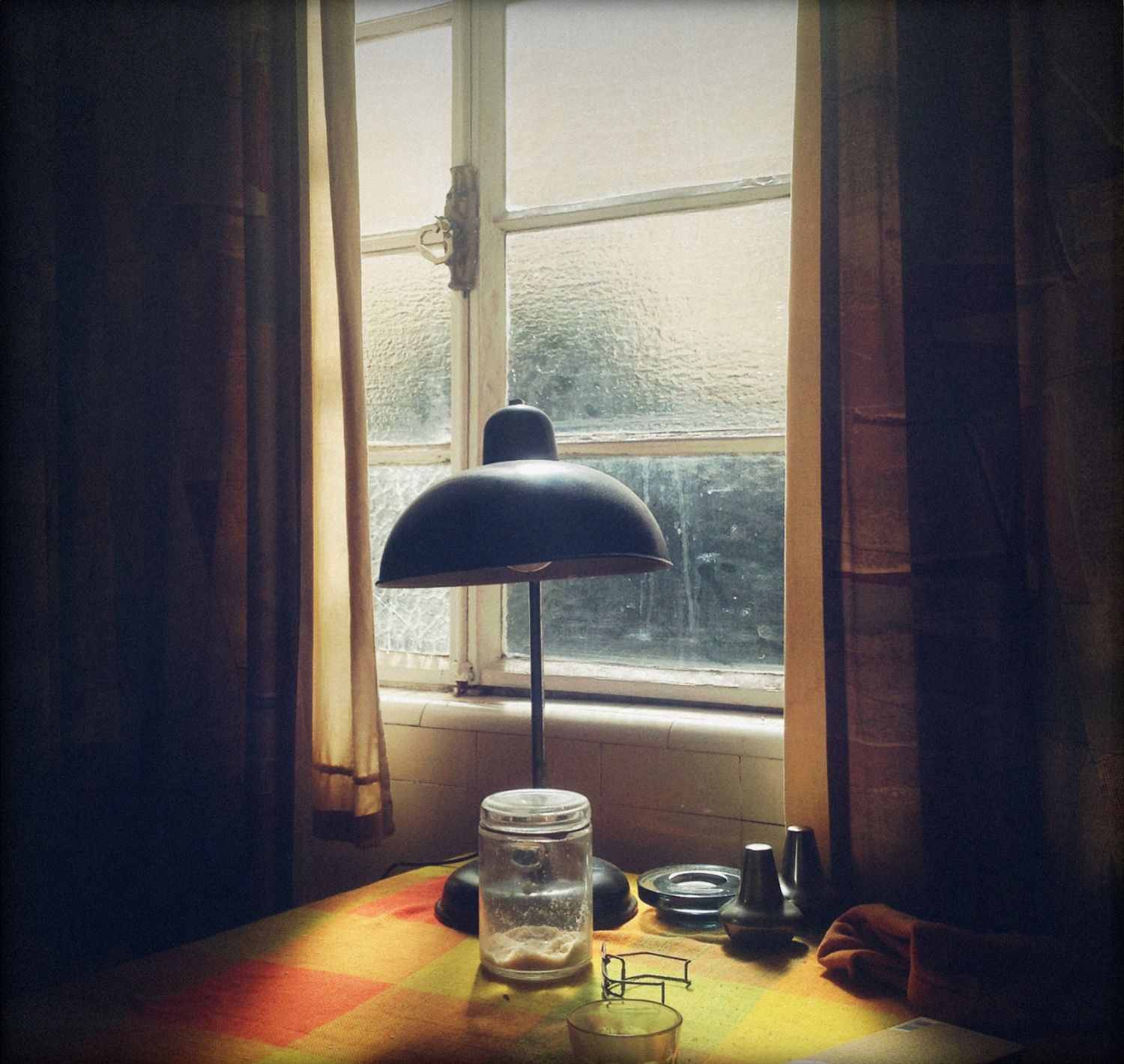
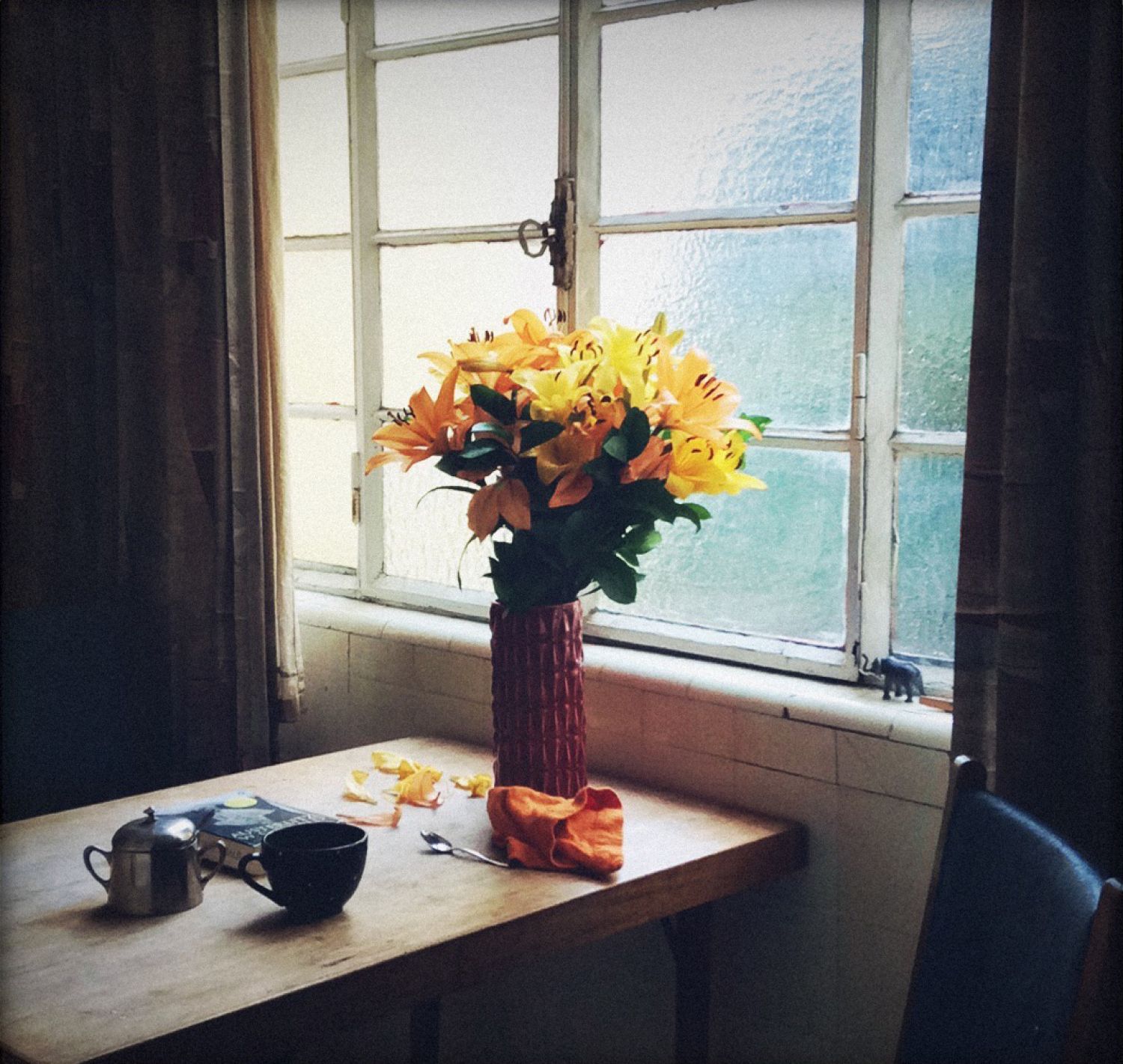
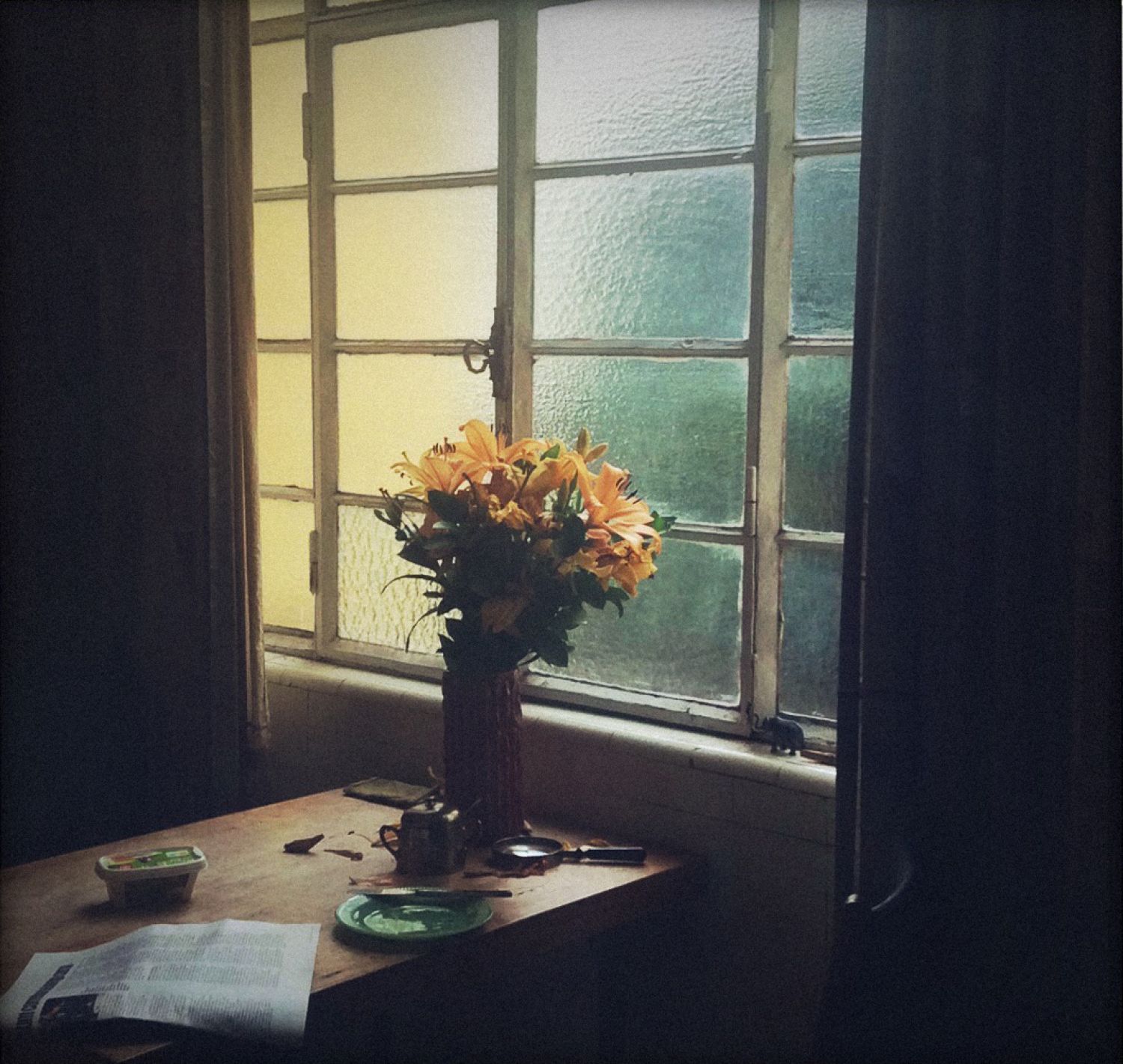
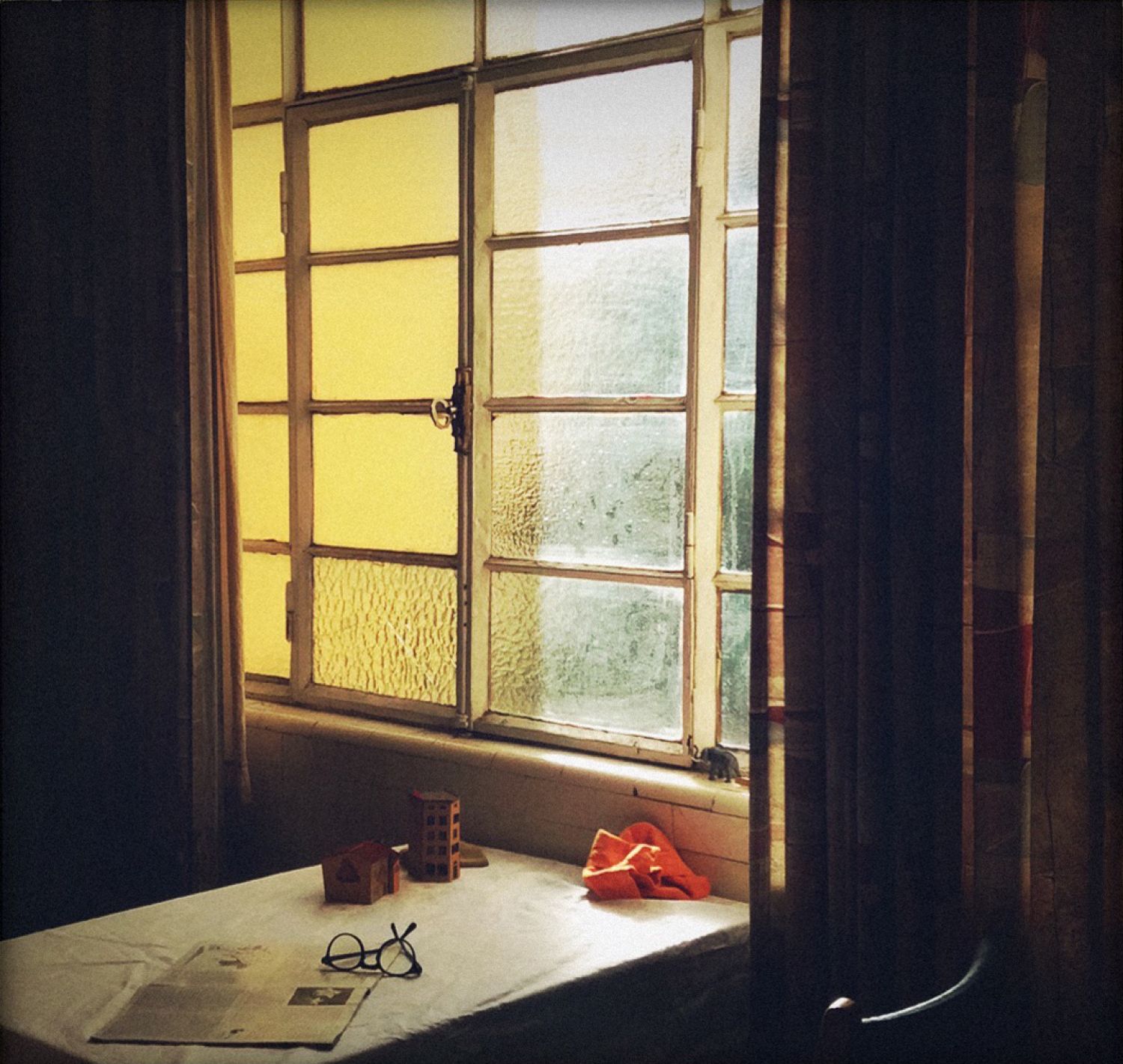
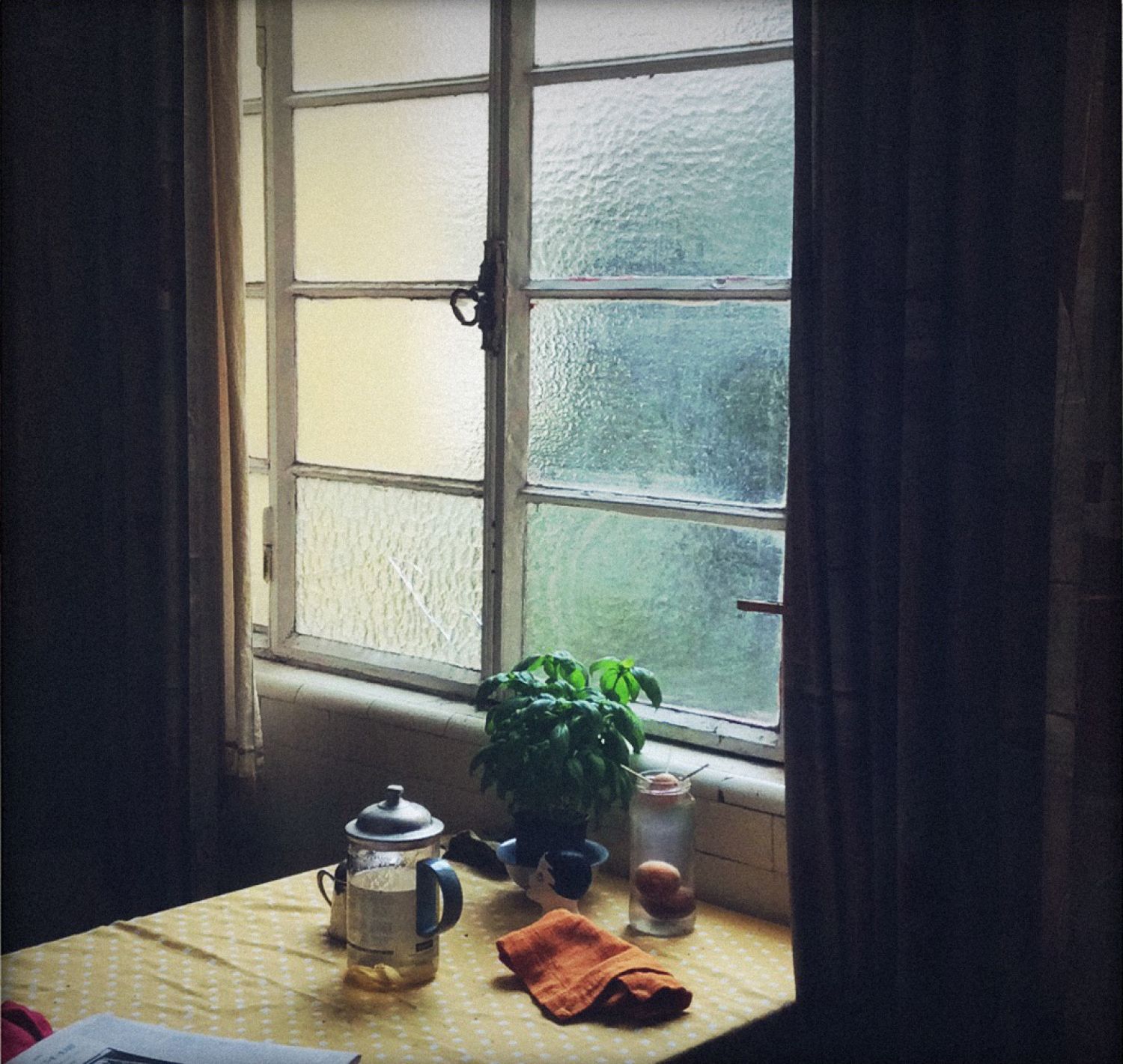
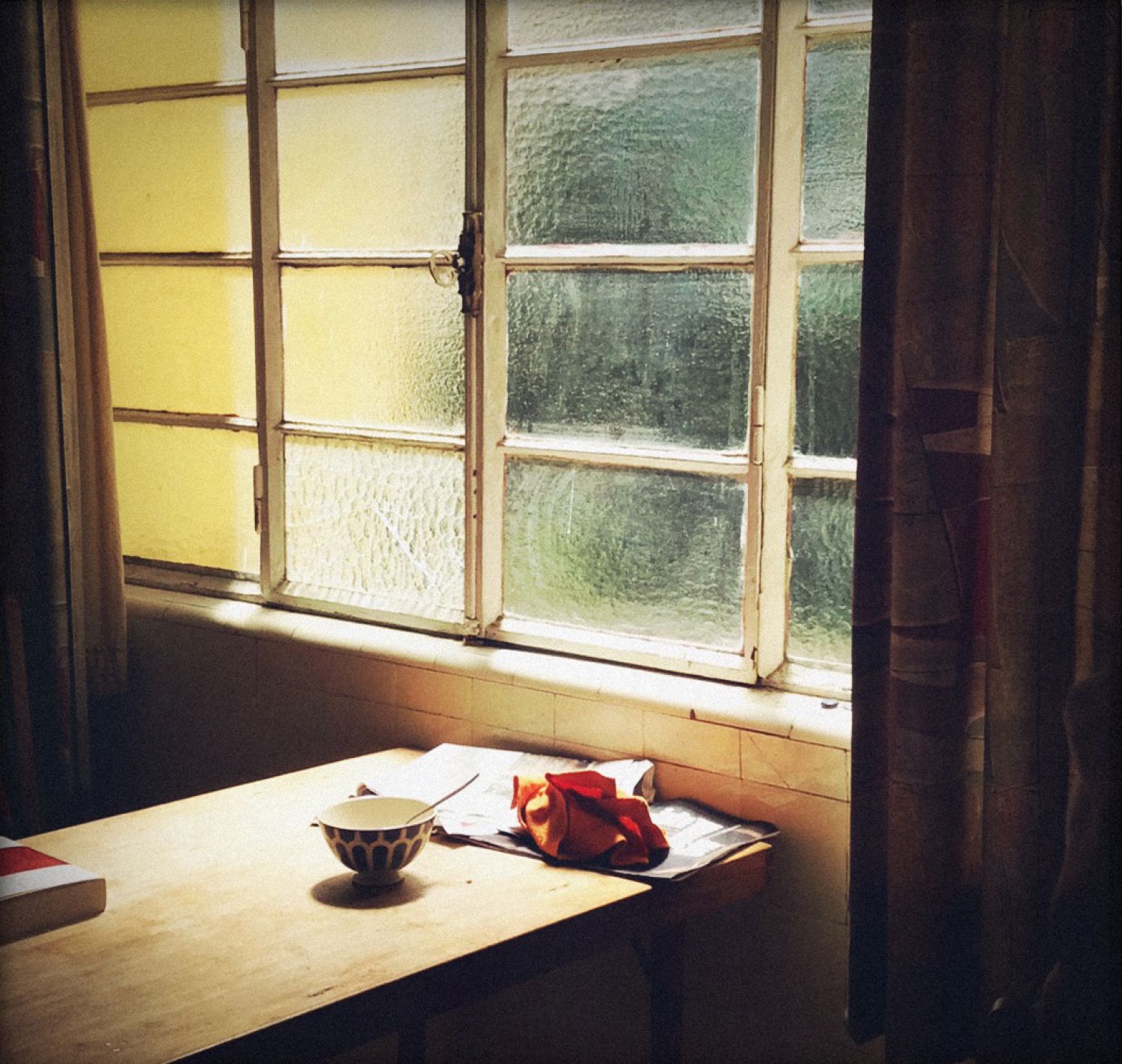
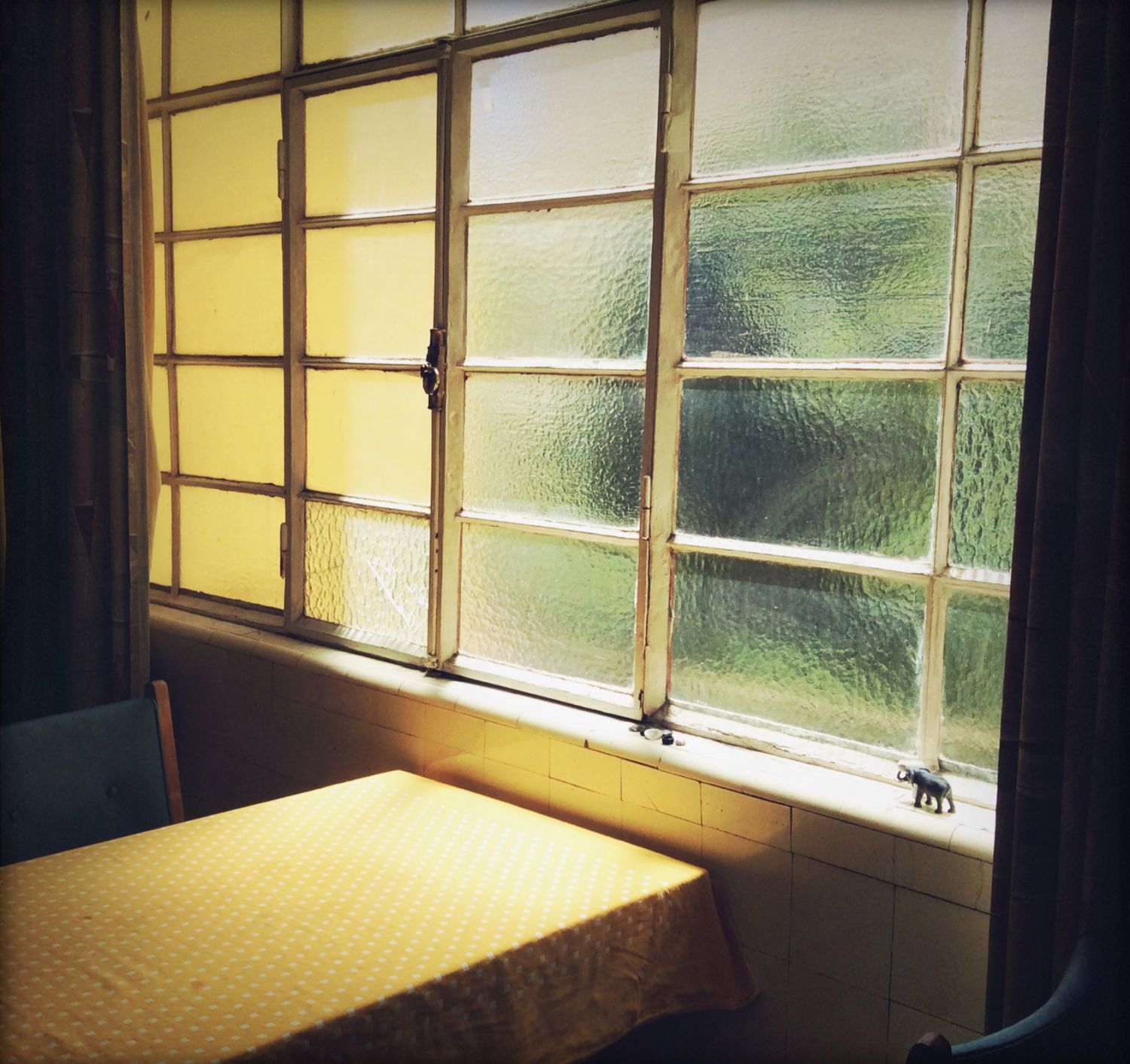

The Bliss of Solitude in Daniel Blaufuks’ Attempting Exhaustion
Katherine Sirois
On what openness do the eyes fall when looking through a window, when staring at it? Daniel Blaufuks’ Attempting Exhaustion series calls for a silent contemplation as the reflective views on windows «flash upon that inward eye, which is the bliss of solitude», as William Wordsworth put it.
The window in the artist’s room is the main subject of this ongoing series, started in 2009. The focal point of the lens and the viewer’s gaze are displaced from an outside to the interior surface of the window, its variable dim light and its immediate surroundings: a table and familiar objects as dishes, cutlery and tablecloths, fruits and flowers, newspapers and books, bibelots and toys. Their back-and-forth and arrangement vary from day to day, from moment to moment as emerging signs of the artist’s presence, as hints of his everyday life simple actions. «Retreating from the outside world, I slowly transformed my kitchen into a refuge, a shelter, a place for introspection and solace»[1].
The journey through the glimpse of curiosity and amazement is reduced to an interior, to its silence and calmness. Therefore the experience goes from the spectacular to the intimate, from the sphere of struggle and action to recollection and meditation. The viewer’s sight is kept inside and if the blurred ancient glass window shown in Attempting Exhaustion lets the light in, it doesn’t really let the gaze out. The outer «more» becomes an inner «less» as the outer less becomes an innermost.
Does the private space insulate? Behind the window, the outside world can remain accessible, but its manifestation is attenuated, imagined, reduced to its intangible visual dimension. In its proximity, it remains distant. It can also become an auratic presence. Light passing through the glass walls makes the connection between the interior and the exterior, like the air that circulates. The window, with its visual permeability and its ‘frontier effect’ is separation and union all at once. A relational surface such as the skin is.
Interior, interiority. The enjoyment of the things and events of the world is suspended and postponed to an uncertain future... But in bits and pieces, it still interferes, evokes as it is evoked, invokes as it is invoked, and goes on and on with its everlasting sound and fury. It is an inner power to focus on the present, on what stands and occurs directly in front of and around us, on what our senses give us to see, to feel, to listen to, to touch, on what is happening in us. But the present also becomes the vessel of memory, of beloved places and people, of past moments. Inside and outside. Inside is outside. As the images of the window tell us, the exterior is interiorised and the interior is exteriorised, and both endlessly fuse in an eternal replay. Because, «whoever we are and wherever we are, the world is constantly passing through us», as Michel Lussault wrote in the context of his reflection on spatiality and habitability. The haunting otherness leads to the window, to realise that nothing can ever completely separate us from the outside, from its unquietness, its instability and its unstoppable transformation, even if we attempt to.
The frames, those of paintings, those of photos, those of windows, are also discontinuities of plans. Photos create stillness out of the perpetual becoming, as windows cut out the continuous surfaces of walls, creating movement and variability. They open onto other times and other places, they open onto the (im)possible.
The emotional potentiality triggers the moveable intangible Thought. It becomes interior, it amplifies an inside. Such interiority, which we hallucinate in what is given as exterior, through the window or in the depth of a mirror, is permanently entwined with a multitude of micro-perceptions, of moving desires, affective and atmospheric intensities. All of which gives shape to our vision, at the indefinite limit which separates it from the (outer) world. Expectation or nostalgia, likewise memory and foresight, the hope that generates horizons or the imagination which captures and develops the virtualities of what is perceived, seem to stem out of the window’s frame, out of the picture, out of simulacre and repetition. Could experiencing our own presence in front of an enigmatic image or a translucent window trigger a descent into one’s self, into one’s shades and invisible life forms at the origins of all visual representations, of all transformational processes? Would these still-life images of a window, of everyday objects, of silent landscapes, those glimpses of the vast inner outdoors, be ways of describing the act of turning one’s sight towards the point of her view, towards the movement and vision of the inward eye when grasping the world and its infinite differentiation?
In the repetition of days and nights, the subtle motion of the surrounding small things of an indoor space reveals the continuum impalpable change of Being and a sense of Becoming. Likewise the perpetually changing light and the fluctuations of the chromatic resonances, the tangible objects perform a dance of ever differing combinations which virtually generate infinite compositions. «Nothing moves, and yet everything moves. Hundreds of photos reveal only the smallest interval of time within time: a microscopic fragment, insignificant in the context of its continuous flux»[2].
Attempting to exhaust the endless variations of life in captured images, even in its slow pace and most nuanced manifestations, is an inexhaustible gesture, a never ending work progressing somewhere, in a room of one’s own, to draw the portrait of the artist as a free and fulfilled recluse. Living one moment at a time, finding miracles in the ordinary, while «the destiny drives the wagon of everything down the road of nothing»[3].
Images of the Attempting Exhaustion series were previously issued as a book by Akio Nagasawa Publishing (2017).
Footnotes



